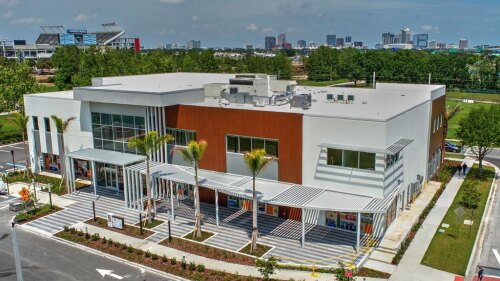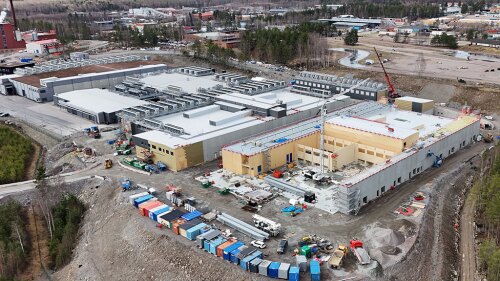Maturing loans are back. Published reports from sources including conventional and securitized commercial mortgage lenders, commercial bankers, and investment bankers shows that the real estate industry will continue to be challenged by the amount of loans maturing from 2014 to 2017.
Last year, an estimated $63 billion in mortgage loans matured; this year, that number is estimated to increase to $82 billion. Next year, the number rises to $152 billion, then to $171 billion in 2016, and—it is hoped—tops out at $214 billion in 2017.
For now, loans appear refinanceable because of the benign interest rate environment. The question is: Will they be refinanceable in a rising interest rate environment with implied lower debt yields and metrics including loan-to-value ratios that are above the norms? An additional factor to be considered is the amount (if any) by which net operating income has increased during recent years. Clearly, the real estate industry has been helped by incrementally improving fundamentals combined with a dearth of new supply.
As interest rates increase, liquidity will become dear in every debt market, and someone (the borrower) faces possibly being crowded out of the market. If that becomes the case, borrowers will need to make additional massive equity investments to get their loan “back in balance.”
At the end, this may turn out to be nothing or another chance to make a value-added investment with prospects for outsized rates of return.
Whither the GSEs: An Update
At present, any number of proposals are floating around Washington as to what to do with the government-sponsored enterprises (GSEs), a decision made more complicated by the GSEs’ recent record earnings and payment of over $200 billion in dividends to the U.S. Treasury.
We sense from our reading that the final legislation will most likely include provisions similar to the following:
- Creation of a new government entity: “Federal Mortgage Insurance Corporation”—a new government mortgage “utility.”
- Funding of a mortgage insurance fund to protect against a future bailout.
- The requirement that private capital sources take the first 10 percent of any loss.
- The creation of some form of dedicated securitization platform.
- Stronger underwriting standards.
The next step is hard to predict as the natural tendency in Washington is to kick the can down the road rather than focus on a solution. Our sense is that this problem will be one of the legacy issues the present Congress passes on to the next one.
Monday’s Numbers
The Trepp survey for the period ending March 21, 2014, showed spreads unchanged during the survey period, with borrowers and lenders focusing on getting deals committed and closed as efficiently as possible. Absent some form of financial crisis or an (unlikely) major change in Federal Reserve Board policy, spreads should remain range-bound in the very attractive +/–140 basis point area.
Asking Spreads over U.S. Ten-Year Treasury Bonds in Basis Points | |||||||
12/31/09 | 12/31/10 | 12/31/11 | 12/31/12 | 12/31/13 | 3/21/14 | Month earlier | |
| Office | 342 | 214 | 210 | 210 | 162 | 150 | 149 |
| Retail | 326 | 207 | 207 | 192 | 160 | 143 | 146 |
| Multifamily | 318 | 188 | 202 | 182 | 157 | 139 | 139 |
| Industrial | 333 | 201 | 205 | 191 | 159 | 133 | 142 |
| Average spread | 330 | 203 | 205 | 194 | 160 | 141 | 144 |
| 10-Year Treasury | 3.83% | 3.29% | 0.88% | 1.64% | 3.04% | 2.75% | 2.73% |
The most recent Cushman & Wakefield (C&W) Equity, Debt, and Structured Finance Group’s monthly Capital Markets Update of commercial real estate mortgage spreads, dated March 5, 2014, showed spreads unchanged during the most recent survey period.
In its comment accompanying the survey, C&W noted the following:
- Floating-rate lenders (commercial mortgage–backed securities [CMBS], commercial banks, and public and private debt funds) are becoming increasingly active. Floating-rate loans are often used to finance transition properties, allowing the borrower to prepay without penalty, upsize the loan based on increases in cash flow (and therefore property value), and pay for tenant and other capital improvements. Loans are priced at LIBOR plus a spread in the high 100s to 400s.
- Real Capital Analytics reported that U.S. real estate investment from China tripled last year while investment from Middle Eastern sources doubled during the period.
- CMBS delinquencies decreased for the ninth-consecutive month. Trepp LLC noted that this is the first time the rate has been below 7 percent since February 2010. Today’s rate is 264 basis points below where it stood a year ago.
Ten-Year Fixed-Rate Commercial Real Estate Mortgages (as of January 8, 2014) | |||
Property | Maximum loan-to-value | Class A | Class B |
| Multifamily (agency) | 75–80% | T +175 | T +180 |
| Multifamily (nonagency) | 70–75% | T +185 | T +195 |
| Anchored retail | 70–75% | T +205 | T +220 |
| Strip center | 65–70% | T +220 | T +235 |
| Distribution/warehouse | 65–70% | T +195 | T +210 |
| R&D/flex/industrial | 65–70% | T +210 | T +230 |
| Office | 65–75% | T +195 | T +215 |
| Full-service hotel | 55–65% | T +255 | T +280 |
| Debt-service-coverage ratio assumed to be greater than 1.35 to 1. | |||
Year-to-Date Public Equity Capital Markets
Dow Jones Industrial Average: –1.53%
Standard & Poor’s 500 Stock Index: +0.50%
NASD Composite Index (NASDAQ): –0.50%
Russell 2000: –1.02%
Morgan Stanley U.S. REIT Index: +5.36%
Year-to-Date Global CMBS Issuance | ||
2014 | 2013 | |
| U.S. | $19.0 | $22.9 |
| Non-U.S. | 0.5 | 2.5 |
| Total | $19.9 | $25.3 |
| Source: Commercial Mortgage Alert | ||
Year-to-Date Public U.S. Treasury Yields
U.S. Treasury Yields | |||
12/31/12 | 12/31/13 | 3/29/14 | |
| 3-month | 0.08% | 0.07% | 0.04% |
| 6-month | 0.12% | 0.10% | 0.06% |
| 2-year | 0.27% | 0.38% | 0.45% |
| 5-year | 0.76% | 1.75% | 1.75% |
| 7-year | 1.25% | 2.45% | 2.31% |
| 10-year | 1.86% | 3.04% | 2.72% |




